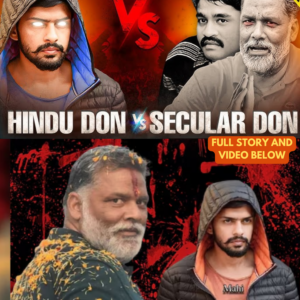In recent years, the rise of Lawrence Bishnoi has captured the attention of both law enforcement and the media, sparking debates about the nature of crime in India. Bishnoi, a gangster currently incarcerated, has emerged as a formidable figure, not just within India but also on international platforms, particularly in Canada. His notoriety raises questions about how a criminal can gain such an influential status.
The criminal activities associated with Bishnoi have expanded beyond India’s borders. On October 14, 2024, Canadian National Security made an official statement linking Bishnoi’s gang to the Khalistani movement, further complicating the narrative surrounding his influence and reach. Such connections raise significant concerns about organized crime’s intersection with political movements.
Bishnoi’s story begins in Punjab, where he was born into a family with law enforcement ties. His father worked in the Haryana police, but this background did not deter him from pursuing a life of crime. As a student, he became embroiled in violent incidents that marked the beginning of his descent into the criminal underworld.
The transformation from a regular student to a gangster can be traced back to a series of violent events during college elections. In 2008, a confrontation during a student election led to his first legal troubles when he attempted to intimidate an opposing candidate, resulting in charges of attempted murder. This marked his entry into the criminal justice system.
While incarcerated, Bishnoi established connections with other criminals, including Ranjeet Dupla, an arms dealer. This network not only facilitated his access to sophisticated weapons but also allowed him to build alliances that would prove crucial to his criminal endeavors upon his release. His time in prison became a training ground for future criminal activities.
The cycle of violence continued after Bishnoi’s release. He sought revenge against political opponents and engaged in further acts of aggression, solidifying his reputation within the criminal community. His involvement in multiple cases of attempted murder further entrenched his status as a feared figure in Punjab.
Bishnoi’s ambitions extended to university elections, where he aimed for the position of student council chairman. His losses only fueled his desire for vengeance, leading to violent confrontations with rivals. This relentless pursuit of power and respect within the criminal hierarchy showcased his willingness to resort to extreme measures.
As Bishnoi’s story unfolds, it becomes evident that he represents a new era of organized crime in India, one that transcends traditional boundaries and challenges law enforcement agencies. His ability to command loyalty and fear among his peers suggests a complex personality, combining charisma with brutality.
The ongoing scrutiny of Bishnoi’s activities raises important questions about the nature of celebrity within the criminal world and the societal implications of such figures gaining notoriety. As discussions continue about accountability and justice, Bishnoi’s narrative serves as a stark reminder of the challenges facing society in combating organized crime.
News
Amitabh Bachchan behaved badly with his daughter-in-law Aishwarya Rai | Amitabh IGNORE Aishwarya Rai
In recent weeks, a wave of speculation has emerged suggesting that all may not be well between former Miss World Aishwarya Rai and the iconic Bachchan family. This speculation has captured the attention of fans and the media, as rumors…
Amitabh gave a message to daughter-in-law Aishwarya Rai, said “No matter how your house is, it is yours”
Amitabh Bachchan, the iconic figure of Indian cinema, has a longstanding tradition of engaging with his audience through social media. He often shares reflections on his life, career, and personal philosophies. Recently, a particular post of his has stirred significant…
Salman Khan vs Lawrence Bishnoi | Why it is Happening? |
Salman Khan vs Lawrence Bishnoi | Why it is Happening? | The tension between Bollywood superstar Salman Khan and gangster Lawrence Bishnoi has become a hot topic in recent news. This clash is not just a simple feud; it embodies…
Lawrence Bishnoi Vs Pappu Yadav | Bishnoi Targets Anti-India Mafia?
In the ever-evolving landscape of India’s criminal underworld, a new chapter is unfolding, marked by the dramatic confrontation between notorious gangster Lawrence Bishnoi and the infamous Bihar don, Pappu Yadav. This rivalry has escalated recently, with Bishnoi’s gang issuing a…
LAWRENCE BISHNOI VS SALMAN KHAN, PAKISTANI PUBLIC REACTION AFTER NADEEM KHAN VIRAL VIDEO, REAL TV
The recent controversy involving Bollywood superstar Salman Khan and Lawrence Bishnoi has sparked intense discussions across communities, especially concerning allegations of animal cruelty. The speaker, representing a particular community, emphasizes that if there is evidence that Khan has harmed a…
LAWRENCE BISHNOI’S DIWALI GIFT TO PAPU YADAV LIVE, AFTER NADEEM KHAN & SALMAN KHAN, LATEST NEWS
In a recent live discussion, significant attention was drawn to the ongoing tensions surrounding Pappu Yadav and Lawrence Bishnoi, especially in light of recent developments involving prominent figures like Nadeem Khan and Salman Khan. The speaker began by addressing the…
End of content
No more pages to load











